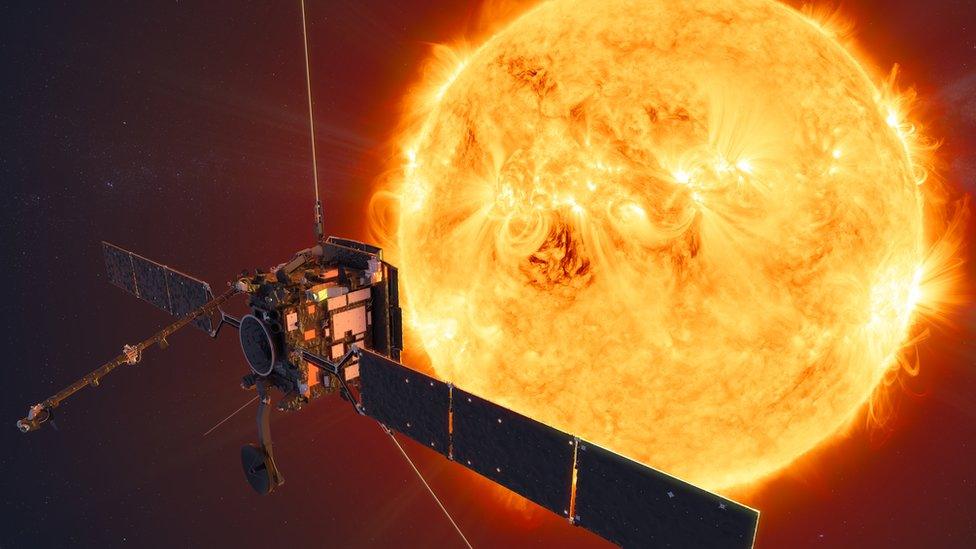Solar Orbiter: What is it and and what's so special about it?
- Published
- comments

The Sun might be a familiar sight in the sky, but there's lots that scientists still don't know about it.
They're hoping that's about to change though thanks to Solar Orbiter, a special new probe which was launched on Monday 10 February.
It's a task far too difficult and dangerous for human astronauts, so instead the European Space Agency (ESA) is sending the satellite built especially for the task.
WATCH: Solar Orbiter - All you need to know about
How will Solar Orbiter reach the Sun?
First Solar Orbiter has to fly to Venus, and use its gravity to go on a different orbit. Then travelling back and forth between Venus and Earth many times will help it get to the distances and angle necessary to successfully make it to the Sun.
All of this means it will take three years before it gets to its final destination.
But it's not time wasted. During the journey, Solar Orbiter's instruments will be tested; gathering measurements that will be of interest to scientists even before it reaches the Sun.
How will Solar Oribiter cope near the Sun?
Solar Orbiter has been designed to experience sunlight 13 times more intense than what we feel on Earth.
It will face heat of more than 500 degrees - that's much hotter than boiling water.
To keep cool Solar Orbiter has a sunshield to help protect it from the full intensity of the Sun, and it's also got radiators that pass heat from the probe back out into space.
What will Solar Orbiter do?
Once it gets to the Sun, its hoped Solar Orbiter will give us the first ever views of the top and bottom of the Sun, as well as shedding more light on the connections between the Sun and Earth.
The probe will be looking out for storms forming on the Sun, as well as keeping an eye on how they develop over time.
Solar Orbiter is scheduled to begin making science measurements in May, with full operations starting in November 2021 when the probe's telescopes switch on.
"It will capture the imagination like science fiction does and inspire the next generation of scientists and space explorers," said Yannis Zouganelis, ESA's deputy project scientist for Solar Orbiter.
Why is this mission to the Sun different?
It blasted off from Kennedy Space Center in the United States and although the mission is led by the European Space Agency, Nasa are also involved too.
Nasa already have their own probe at the sun, called Parker Solar Probe. It was launched 18 months ago and has flown closer to the sun than any spacecraft.
At just 3.83 million miles from the solar surface - technically inside the sun's atmosphere - Parker will be seven times closer to the Sun than Solar Orbiter.
But because it is so close to the Sun, Parker can't take direct images. If it looked at the Sun, it would melt.
Earlier this year the Daniel K Inouye Solar Telescope managed to capture high resolution images of the solar surface.
From its slightly less scorching vantage point, Solar Orbiter will be able to make long-range observations of the surface features.
Scientists are already excited by the photos it will be able to take and send back to Earth.
- Published30 January 2020
- Published3 October 2014
